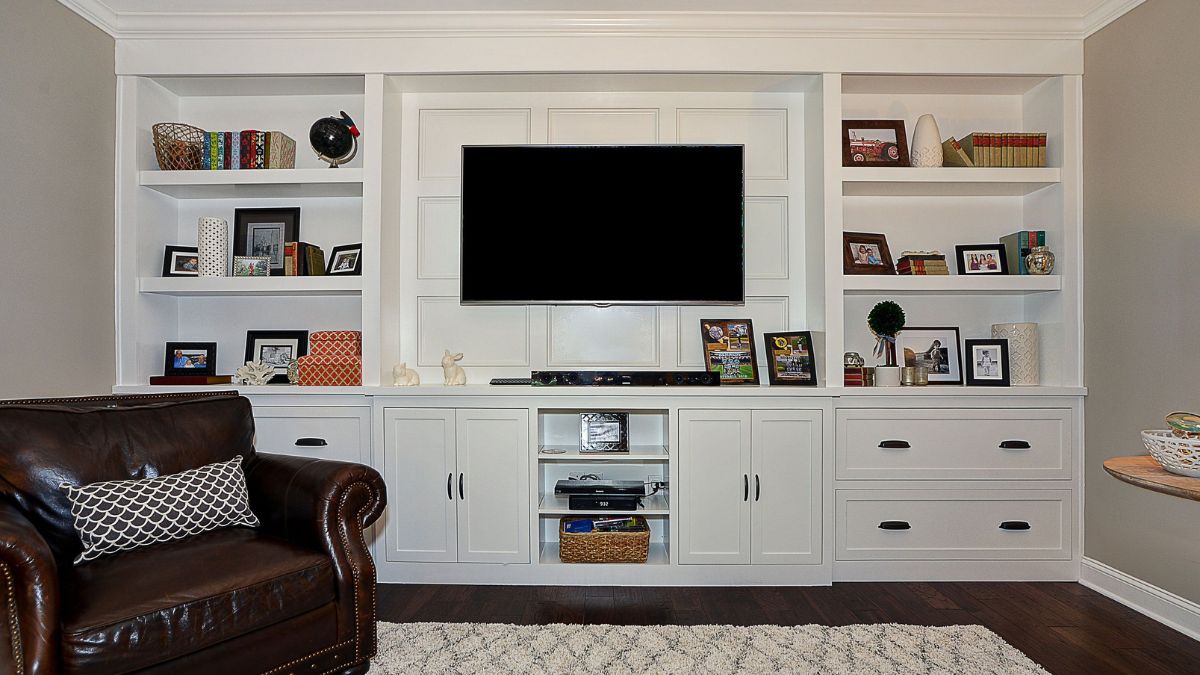An entertainment center is more than just a piece of furniture. It’s the focal point of your living space, the stage for your Netflix binges, family movie nights, or gaming marathons. But with so many options on the market, choosing the perfect entertainment center can feel overwhelming. What size should it be? What features should it include? Does the design match your decor?
This comprehensive guide will walk you through everything you need to know to find an entertainment center that fits your home, style, and needs perfectly.
Why Your Entertainment Center Matters
Your entertainment center isn’t just practical; it’s a key part of your interior design. A good one helps organize your electronics and showcase your personality while complementing the aesthetics of your space. From housing your TV to providing storage for gaming consoles, speakers, or even books, your entertainment center plays multiple roles.
When chosen thoughtfully, it can elevate your room’s look while making your life easier.
Key Considerations Before Buying an Entertainment Center
To find the entertainment center that best fits your home and lifestyle, you’ll need to think about a few important factors.
1. Measure Your Space
Before you start browsing options, break out the tape measure. Knowing the size of your available space is vital to avoid buying something too large or too small.
- Width and Height: Measure the wall or floor space where you plan to place your entertainment center. Leave at least three inches of space on each side to avoid a cramped look.
- Depth: Check the depth of your current TV and other electronics like gaming consoles to ensure they’ll fit comfortably.
- Viewing Distance: Make sure your entertainment center can house a TV that aligns with your seating distance. A general rule of thumb is your screen size should be roughly 1.5 times your viewing distance.
2. Consider Your Storage Needs
Think about how you’ll use your entertainment center. Is it purely for your TV, or do you need space for gaming consoles, soundbars, Blu-ray players, remote controls, or even books?
Entertainment centers can come with a range of practical storage features:
- Open shelves for easy access to everyday electronics
- Cabinets or drawers to hide clutter like cables and remotes
- Built-in cable management systems to avoid tangled cords
- Space for decor pieces to personalize the area
3. Match Your Room’s Style
Your entertainment center should blend seamlessly with your home’s decor. Whether you prefer sleek and minimal designs or rustic farmhouse vibes, there is an entertainment center for every aesthetic.
- Modern style: Look for clean lines, glossy finishes, and neutral colors like black, white, or gray.
- Rustic style: Opt for wood finishes like oak or mahogany, often paired with metal hardware for a vintage touch.
- Scandi style: Choose entertainment centers with natural wood tones and simple designs in neutral hues.
- Industrial style: Dark tones and exposed metal frames will complement industrial decor.
4. Choose the Right Materials
The material of your entertainment center will affect its durability, look, and price. Here are common materials to consider:
- Wood: Offers a classic and timeless style. Solid wood is durable but more expensive, while laminate or MDF (medium-density fiberboard) offers an affordable alternative.
- Metal: Ideal for modern or industrial style, and it’s highly durable.
- Glass: Provides a sleek and open look but can be more fragile and prone to fingerprints.
5. Think About Versatility
Versatility is key if your home is small or needs frequently change. Look for entertainment centers that are modular, adjustable, or multifunctional to maximize your space. For example:
- Floating entertainment centers save floor space.
- Units with adjustable shelves can adapt to your growing needs.
- Some designs include built-in LED lighting, fireplace inserts, or even mounts for TVs.
6. Set Your Budget
Entertainment centers come in a wide range of prices, from budget-friendly finds under $100 to luxury units costing thousands. Set a budget early to narrow your options and avoid overspending.
Types of Entertainment Centers
Now that you’ve narrowed down your needs and preferences, here’s an overview of popular types of entertainment centers to consider.
1. TV Stands
If you want something simple and compact, a TV stand might be the answer. These are ideal for smaller spaces and minimalist designs. Most have open shelves or drawers for basic storage.
Best for: Apartments or small living rooms.
2. Wall-Mounted Units
Wall-mounted entertainment centers create a sleek, modern look and free up floor space. Many units include shelves or cabinets mounted alongside or under the TV.
Best for: Modern and contemporary interiors.
3. Media Consoles
A stylish option with ample storage. Media consoles typically feature cabinets, shelves, and space for large TVs, making them perfect for those with multiple electronics.
Best for: A standard-sized living room with ample floor space.
4. Corner Units
Designed to fit into the corner of a room, these units are a great way to utilize awkward or limited spaces.
Best for: Small rooms or tricky layouts.
5. Built-In Wall Units
For the ultimate entertainment setup, built-in units are custom-made to fit your room perfectly. These can include extensive shelving, lighting, and even display areas.
Best for: Spacious rooms or homeowners seeking a custom look.
Additional Tips for Choosing the Perfect Entertainment Center
- Check Weight Capacity: Ensure the center can support the weight of your TV and gadgets.
- Plan for Upgrades: If you’re planning to upgrade to a larger TV in the future, choose a unit with some flexibility.
- Test Accessibility: If you’ll need to swap out cables or devices often, make sure shelves are easy to access.
- Read Reviews: Before purchasing, check reviews to understand the quality, longevity, and overall user satisfaction.
Where to Shop for an Entertainment Center
Here are some top retailers offering a wide range of entertainment centers to suit every style and budget:
- IKEA: Affordable, minimalist designs with modular options.
- Wayfair: An extensive catalog of styles, sizes, and prices.
- West Elm: Sleek and modern pieces with high-quality materials.
- Amazon: Budget-friendly options with quick delivery and customer reviews.
Organize Your Space for Relaxation and Enjoyment
An entertainment center isn’t just a piece of furniture; it’s the backbone of your living room experience. By considering your space, style, and needs, you’ll find the perfect match that supports your lifestyle while looking great.
Now that you’re equipped with all the tips, it’s time to transform your living space into the ultimate relaxation zone. Start shopping for an entertainment center that ticks all the boxes and makes every movie marathon, binge-watch session, or game night unforgettable.
FAQs
Q: What size entertainment center should I choose?
A: The size of your entertainment center should be proportionate to your TV and the available space in your room. Measure your TV and ensure the entertainment center is wide enough to accommodate it while leaving some extra space on each side for visual balance.
Q: How do I manage cable clutter in my entertainment center?
A: Look for entertainment centers with built-in cable management systems, such as cut-out holes or concealed compartments. Additionally, using cable ties or organizers can help keep cords neat and tangle-free.
Q: What materials are best for an entertainment center?
A: The choice of material depends on your style preference and durability needs. Wood offers a classic and sturdy option, while metal and glass create a sleek, modern look. Consider your existing décor when deciding on materials.
Q: Can I use an entertainment center for storage?
A: Absolutely! Many entertainment centers come with shelves, drawers, or cabinets that are perfect for storing media equipment, games, books, and decorative items. Choose a design that meets both your aesthetic and storage needs.
Q: How do I ensure my entertainment center is safe for children?
A: Opt for entertainment centers with rounded edges and ensure heavy items, like TVs, are securely anchored. Avoid placing fragile or sharp objects within a child’s reach. Safety straps can also be utilized for added security.











